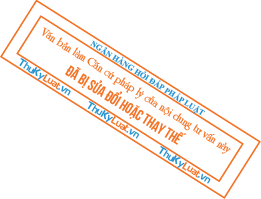What are requirements for installing fire hydrant systems in Vietnam?
 Bấm vào đây để xem bản dịch tiếng Việt của bài viết này
Click HERE to see the Vietnamese translation of this article
Bấm vào đây để xem bản dịch tiếng Việt của bài viết này
Click HERE to see the Vietnamese translation of this article
What are requirements for installing fire hydrant systems in Vietnam? Thank you!

Pursuant to Section 5.2.6 of the national technical regulations on fire safety for buldings and constructions issued together with the Circular 02/2021/TT-BXD stipulating requirements for installing fire hydrant systems in Vietnam as follows:
5.2.6. Hydrostatic pressure in domestic – firefighting water systems measured in sanitation – technical equipment situated at the lowest elevation must not exceed 0.45 MPa.
Hydrostatic pressure of separate fire suppression systems measured in fire hydrants situated at the lowest elevation must not exceed 0.90 MPa.
During calculation, if pressure in fire suppression systems exceeds 0.45 MPa, install separate fire suppression systems.
NOTE: When pressure between valves and connecting ends of fire hydrants exceeds 0.4 MPa, install separation layers and devices that adjust pressure to lower excess pressure.
5.2.7. Discharge rate of fire hydrants must guarantee height of solid streams necessary for firefighting at any given time of the day even in the tallest and furthest areas. Minimum height and operation radius of solid streams for firefighting must equal height of the area calculated from floor to the highest point of beams (ceiling) but no less than following values:
- No less than 6 m in case of residential buildings, public buildings, manufacturing facilities and auxiliary buildings of industrial structures up to 50 m of fire service height.
- No less than 8m in case of residential buildings with fire service height taller than 50 m.
- No less than 16 m in case of residential buildings, public buildings, manufacturing facilities and auxiliary buildings of industrial structures exceeding 50 m of fire service height.
NOTE 1: Pressure of fire hydrants must take into account losses due to fire hose rollers with 10 m, 15 m and 20 m in length.
NOTE 2: To receive solid streams with up to 4 L/s of flow rate, use DN 50 fire hydrants and DN 65 hydrants for higher flow rate. In case economic – technical documents permit, may use DN 50 hydrants for flow rate exceeding 4 L/s.
5.2.8. Pressure tanks in buildings must be designed to ensure generation of solid stream taller than 4m at the highest storey or at the storey situated immediately below the storey where the tanks are placed and must not be less than 6 m for remaining storeys; in that case, ensure 2 streams with flow rate of 2.5 l/s in 10 minutes if number of calculated streams is 2 or more and 1 stream in other cases.
When installing fire hydrants as sensors for automatic operation of firefighting pumps, consideration to pressure tanks is not required.
5.2.9. In case of installing fire hydrant systems separately from automatic fire suppression systems, volume of reservoir tanks containing water must provide enough water to be used in 1 hour for firefighting and other purposes.
When installing fire hydrant systems on automatic fire suppression systems, working duration of the hydrant shall equal the working duration of the fire suppression systems.
5.2.10. When domestic water systems and firefighting water systems in buildings with at least 6 storeys are connected, upper vertical pipes must be connected in circular model. In that case, in order to guarantee household water change, vertical pipes must be connected to one or many vertical exhaust pipes with valves in circular model.
Dry pipes of fire suppression systems installed in buildings that are not heated, valves must be installed in places where the valves cannot be frozen.
5.2.11. Determination of location and number of indoor vertical pipes and fire hydrants must satisfy following requirements:
- May install double hydrant on vertical pipes in manufacturing facilities and public buildings when number of calculated streams is not less than 3 and in residential buildings when number of calculated streams is not less than 2.
- In residential buildings with corridors reaching up to 10 m in length and 2 streams per fire, may generate 2 streams from the same vertical pipes.
- In residential buildings with corridors reaching up to 10 m as well as manufacturing facilities and public buildings with 2 calculated streams or more per fire, ensure 2 streams from 2 adjacent cabinets (2 different fire hydrants).
NOTE 1: Must install fire hydrants in mechanical floor, garrets and technical floors located in basements if objects and structures made from flammable materials are stored in such places.
NOTE 2: Number of streams generated from each cabinet must not exceed 2.
5.2.12. Fire hydrants must be installed in a fashion that hydrant openings are situated at an elevation of 1.20 m ± 0.15 m compared to the floor and in cabinets with ventilation outlets and applied with seal. With respect to double hydrant, may install the hydrants vertically, in that case, the lower hydrant must be at least 1 m from the floors.
5.2.13. With respect to buildings with 17 storeys or taller, landing valves must be installed in indoor fire hydrant systems of each section with proper dimension of outlets to connect with mobile fire-fighting facilities. The landing valves must be installed with check valves and open seal.
5.2.14. Indoor hydrants must be placed at inner corridors (where water cannot be frozen) of stairwells (except smokeproof enclosures), in lobbies, corridors, passages and other easily accessible locations. Installation of indoor hydrants mentioned above must not obstruct evacuation operations.
5.2.15. In areas protected by automatic fire suppression systems, may install indoor fire hydrants on DN 65 pipes or larger, after control valve clusters of water sprinkler systems.
5.2.16. In closed areas where water can be frozen, pipes of indoor hydrant systems after the pump stations may be dry pipes.
5.2.17. Valves to cut water from dead end branching pipes and major cut valves from enclosed steel pipelines must be situated in a manner that each section shall only cut water from a maximum of 5 hydrants located on the same storey.
5.2.18. If more than 12 hydrants or automatic fire suppression systems are installed in buildings, both independent and integrated indoor water supply systems for firefighting must have at least 2 water supply pipes and must be connected in a circular model.
Best regards!
- Circular 02/2021/TT-BXD Download
-
Editorial Board of LawNet
- Số 19 Nguyễn Gia Thiều, P. Võ Thị Sáu, Q.3, TP. HCM.
- Click to See more

